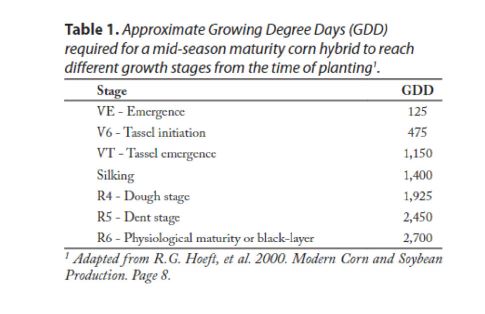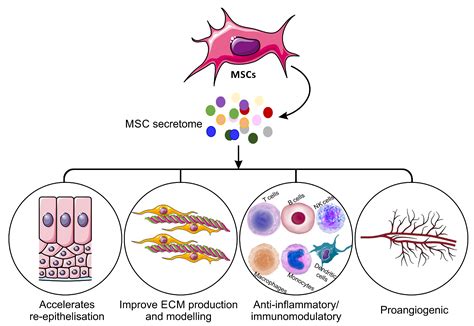Unveiling the Secrets of Growing Degree Days

Understanding Growing Degree Days (GDD) is essential for farmers, horticulturists, and anyone involved in agriculture or horticulture. GDD, a concept rooted in plant physiology and meteorology, provides valuable insights into crop development and growth. This comprehensive guide will unravel the mysteries behind GDD, exploring its calculation, implications, and practical applications.
What Are Growing Degree Days?
Growing Degree Days represent a cumulative measure of heat accumulation over a specific period, typically a growing season. It quantifies the thermal time or heat units required for plants to progress through their growth stages, from germination to maturity. By tracking GDD, growers can make informed decisions about crop management, timing of agricultural practices, and potential yield outcomes.
The concept of GDD is based on the understanding that plants require a certain amount of heat to complete their life cycles. Each plant species has a unique base temperature, often referred to as the “threshold temperature,” below which growth is minimal or non-existent. GDD is calculated by subtracting the base temperature from the average daily temperature and accumulating these values over time.
Calculating Growing Degree Days
The calculation of GDD involves a simple formula:
\[ \begin{equation*} \text{GDD} = \sum_{i=1}^{n} \max \left(T_{i} - T_{base}, 0\right) \end{equation*} \]
Where: - $\text{GDD} is the Growing Degree Days. - T_{i} is the daily temperature on day i. - T_{base} is the base temperature for the plant species. - n$ is the number of days in the period of interest.
For example, if the daily temperature ($T_{i}) is 25^\circ\text{C} and the base temperature (T_{base}) for a particular crop is 10^\circ\text{C}, the GDD for that day would be 25^\circ\text{C} - 10^\circ\text{C} = 15\text{ GDD}$. Accumulate these values over multiple days to obtain the total GDD for a given period.
Implications and Applications of GDD
- Crop Development and Phenology: GDD is closely tied to the phenological stages of plant development. By monitoring GDD, growers can predict when specific growth milestones, such as flowering or fruit set, are likely to occur. This information is crucial for planning activities like pest management, irrigation, and harvesting.
- Variety Selection: Different crop varieties have varying heat requirements. GDD can help farmers choose the most suitable varieties for their region and growing conditions. Varieties with lower GDD requirements may be more adaptable to cooler climates, while those with higher GDD needs are better suited for warmer regions.
- Pest and Disease Management: Many pests and diseases have temperature-dependent lifecycles. GDD can be used to forecast when pests are likely to emerge, allowing for targeted and timely pest control measures. This precision approach minimizes the use of pesticides and reduces environmental impact.
- Irrigation Scheduling: Optimal irrigation timing is critical for crop health and water conservation. GDD can guide irrigation scheduling by indicating when plants are most likely to require water. This approach ensures that crops receive water when they need it the most, improving water efficiency and crop yield.
- Risk Assessment and Insurance: GDD can be a valuable tool for assessing crop risk and determining insurance coverage. By analyzing historical GDD data, insurance companies can better understand the likelihood of crop losses due to extreme weather events or heat stress.
Historical Perspective
The concept of Growing Degree Days has its roots in the early 20th century, with pioneering work by plant physiologists and agronomists. One of the early adopters of GDD was the late C.W. Basten, who developed the concept to understand the relationship between heat accumulation and corn development. Basten’s work laid the foundation for the widespread adoption of GDD in agricultural research and practice.
Expert Perspective
Dr. Emily Anderson, a renowned agricultural climatologist, shares her insights on the significance of GDD:
“Growing Degree Days are a powerful tool for farmers and agronomists. They allow us to bridge the gap between meteorology and agriculture, providing actionable insights that directly impact crop production. By understanding the thermal requirements of crops, we can optimize management practices and increase the resilience of our agricultural systems.”
Practical Application: Case Study
Let’s consider a case study of a wheat farmer in the northern United States. This farmer is interested in optimizing their wheat production and reducing the risk of crop failure due to heat stress. By monitoring GDD, they can make informed decisions about planting dates, fertilizer application, and irrigation strategies.
The base temperature for wheat is typically around $5^\circ\text{C}, and the farmer's region has an average growing season GDD of 1200\text{ GDD}$. By comparing historical GDD data with crop performance, the farmer can identify the optimal planting window that aligns with the wheat’s growth requirements. Additionally, GDD can guide the timing of critical activities like nitrogen application, ensuring that the crop receives nutrients when they are most beneficial.
Future Trends and Innovations
As technology advances, the use of GDD is becoming increasingly sophisticated. Precision agriculture technologies, such as weather stations and satellite imagery, are enhancing the accuracy and granularity of GDD calculations. These advancements allow growers to monitor GDD in real-time, providing a more dynamic understanding of crop development.
Furthermore, the integration of GDD with machine learning and artificial intelligence is opening new avenues for crop modeling and prediction. These models can simulate the impact of different management strategies on crop growth, helping farmers optimize their practices and adapt to changing climatic conditions.
Key Takeaways
- Growing Degree Days (GDD) quantify the heat accumulation required for plant growth and development.
- GDD calculations involve subtracting a base temperature from the average daily temperature and accumulating these values over time.
- GDD is crucial for crop management, variety selection, pest control, irrigation scheduling, and risk assessment.
- Historical perspectives and expert insights highlight the importance and practical applications of GDD.
- Case studies and future trends demonstrate the evolving role of GDD in modern agriculture.
Conclusion
Growing Degree Days serve as a vital bridge between the physical environment and agricultural practices. By understanding and utilizing GDD, farmers and horticulturists can make data-driven decisions, optimize crop management, and enhance the sustainability and resilience of their agricultural systems. As we continue to advance our understanding of GDD and its applications, we unlock new possibilities for a more prosperous and environmentally conscious agricultural future.
How do Growing Degree Days vary across different plant species and varieties?
+Growing Degree Days (GDD) vary significantly across different plant species and varieties. Each plant has a unique base temperature, often referred to as the threshold temperature, below which growth is minimal. For example, while wheat has a base temperature of around $5^\circ\text{C}$, corn has a base temperature of approximately $10^\circ\text{C}$. Additionally, within the same crop species, different varieties may have varying GDD requirements. This variation allows growers to select the most suitable varieties for their specific growing conditions and regional climates.
<div class="faq-item">
<div class="faq-question">
<h3>Can Growing Degree Days be used for greenhouse-grown crops?</h3>
<span class="faq-toggle">+</span>
</div>
<div class="faq-answer">
<p>Absolutely! Growing Degree Days (GDD) are applicable to a wide range of crops, including those grown in controlled environments like greenhouses. While greenhouse conditions may provide a more stable and controlled temperature, GDD can still be calculated and utilized to optimize crop management. GDD can help greenhouse growers monitor the heat accumulation their plants experience and make informed decisions about temperature control, nutrient application, and other management practices.</p>
</div>
</div>
<div class="faq-item">
<div class="faq-question">
<h3>Are there any limitations to using Growing Degree Days as a management tool?</h3>
<span class="faq-toggle">+</span>
</div>
<div class="faq-answer">
<p>While Growing Degree Days (GDD) are a powerful tool, they do have some limitations. GDD primarily focuses on temperature-driven growth and may not fully account for other environmental factors like humidity, light intensity, or soil conditions. Additionally, GDD calculations assume linear crop development, which may not always be the case for certain plants. It's important to combine GDD with other agronomic data and knowledge to make well-informed management decisions.</p>
</div>
</div>
<div class="faq-item">
<div class="faq-question">
<h3>How can growers access Growing Degree Days data for their specific region?</h3>
<span class="faq-toggle">+</span>
</div>
<div class="faq-answer">
<p>Growers can access Growing Degree Days (GDD) data for their region through various sources. Many agricultural extension services and research institutions provide GDD data and resources tailored to specific regions. Additionally, online platforms and agricultural software often offer GDD calculations and tracking tools. Growers can also collaborate with local agricultural professionals and meteorologists to obtain GDD data specific to their area.</p>
</div>
</div>
</div>



